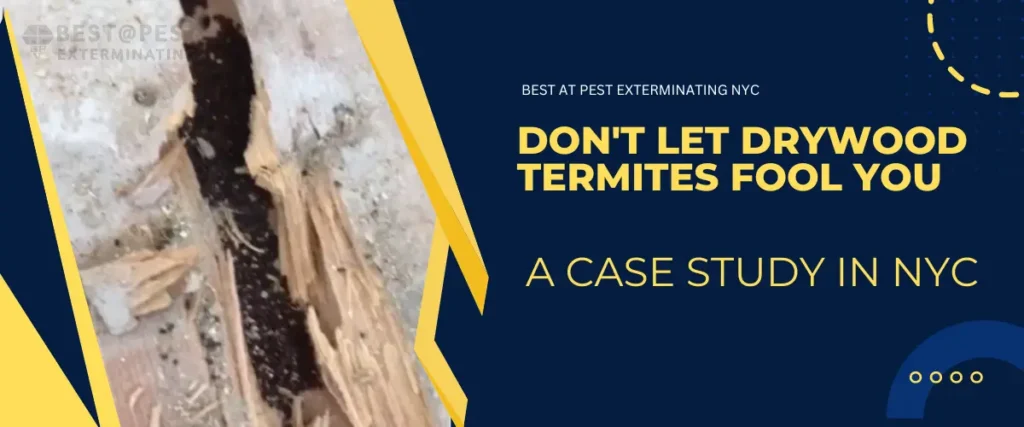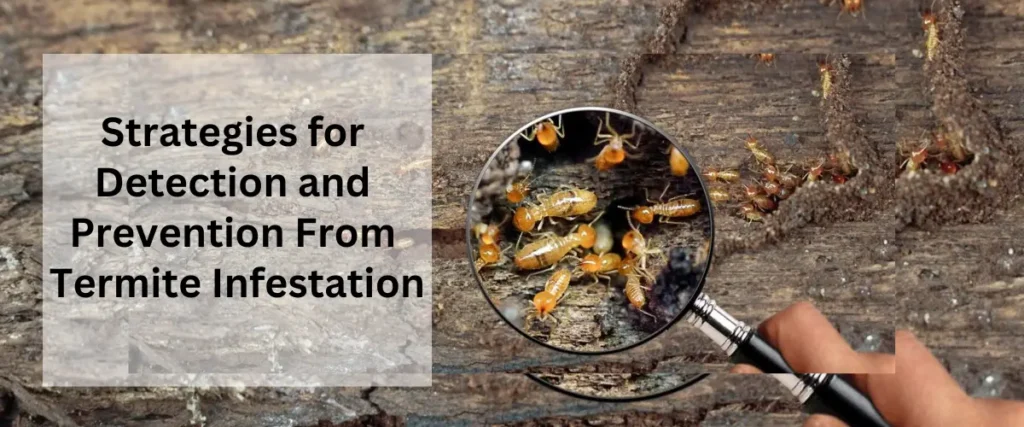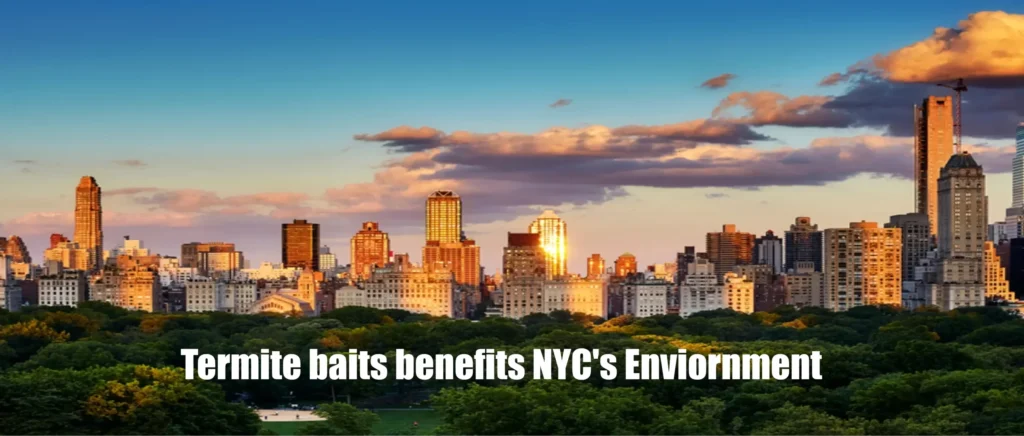
Sustainable Pest Control: How Termite Baits Benefit NYC’s Environment
Sustainable pest control refers to the management of pests in a manner that minimizes adverse effects on the environment, human health, and non-target organisms. It aims to control pests using methods that are ecologically sound, economically viable, and socially acceptable.
Importance of sustainable pest control in urban environments like NYC
In densely populated urban areas like New York City (NYC), pest infestations pose significant challenges. Traditional pest control methods often involve the indiscriminate use of chemical pesticides, which can have adverse effects on human health and the environment. Sustainable pest control methods are crucial in urban environments to mitigate these risks while effectively managing pest populations.
Overview of termite infestation issues in NYC
Termite infestations are a common problem in NYC, particularly in older buildings with wooden structures. These infestations can cause extensive damage to buildings and infrastructure, leading to costly repairs and structural instability.
Understanding Termite Baits
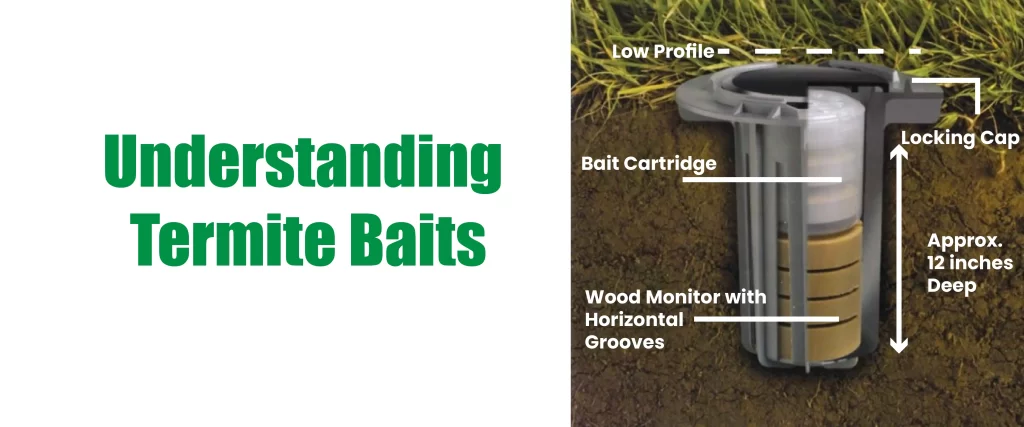
Termite bait stations are small, strategically placed containers containing a slow-acting bait that attracts termites. The bait typically contains a cellulose material laced with an insect growth regulator (IGR) that disrupts the termite’s molting process, ultimately leading to the colony’s demise.
How termite bait stations work
Installation:
Pest control professionals install bait stations around the perimeter of a property, focusing on areas where termites are likely to enter.
Attraction:
The bait stations emit a scent that attracts foraging termites.
Feeding:
Termites enter the station and consume the bait.
Transfer:
Worker termites share the bait with other members of the colony, including the queen.
Colony Elimination:
The IGR in the bait disrupts the molting process, preventing new termites from developing and eventually leading to the colony’s collapse.
Comparison with traditional termite control methods
Chemical Soil Treatments:
Traditional methods involve trenching around a property and applying a chemical barrier designed to kill termites on contact. While effective, these treatments can contaminate soil and pose a risk to pets and beneficial insects.
Fumigation:
This method involves sealing a structure and pumping in a toxic gas to kill all termites present. Fumigation is disruptive, requires temporary relocation, and can harm indoor air quality.
Addressing common questions: “Do termite bait stations work?”
Numerous studies have shown that termite bait stations are effective in eliminating termite colonies when properly installed and maintained. However, their success depends on factors such as the type of termites present and the thoroughness of the baiting process.
Effectiveness of Termite Baits
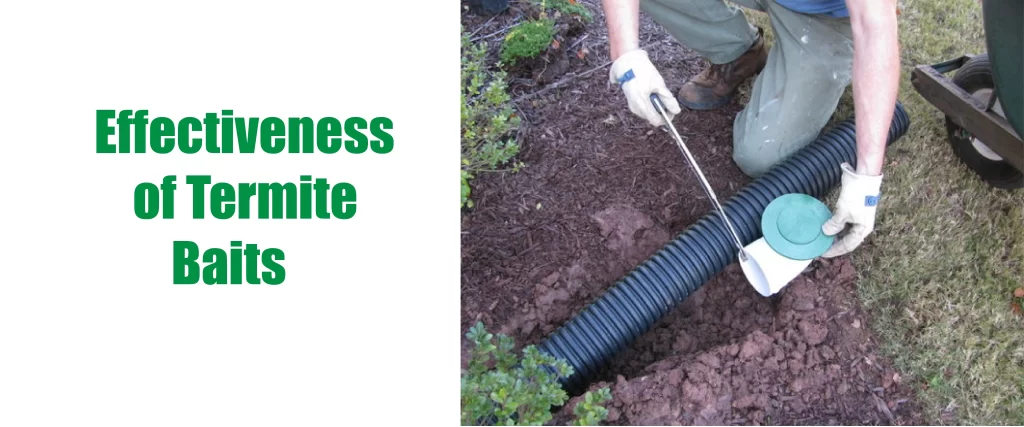
How long do termite bait stations take to work?
The time it takes for termite bait stations to work can vary depending on the size and activity level of the colony. Typically, it takes 4-8 weeks to see a significant reduction in termite activity. However, complete elimination of the colony may take several months. Regular monitoring by a pest control professional is crucial to assess the effectiveness of the treatment.
Comparison with other termite control methods: How long do termite traps take to work?
Chemical Soil Treatments:
These treatments can provide a barrier for several years, but their effectiveness diminishes over time, requiring reapplication every few years.
Fumigation:
Fumigation offers a quick solution, killing termites within a day or two. However, this method doesn’t address the root cause of the infestation and may not prevent future problems.
Installation and Cost
Process of termite bait station installation
The installation process is relatively simple and non-invasive. A pest control professional will:
- Conduct a thorough inspection to identify potential termite entry points.
- Strategically place bait stations around the perimeter of the property, focusing on foundation walls, crawl spaces, and areas with high moisture levels.
- Secure the bait stations to prevent tampering by children or pets.
Factors influencing the cost of installation
Number of Bait Stations Required:
The size and layout of the property will determine the number of stations needed.
Severity of Infestation:
A larger or more active colony may require additional stations and monitoring visits.
Type of Bait Used:
Different bait formulations may have varying costs.
Comparison of costs with other termite control methods
The initial cost of installing termite bait stations can be slightly higher than some traditional methods. However, there are several factors to consider when comparing costs:
- Long-Term Effectiveness: Bait stations offer continuous monitoring and control, potentially eliminating the need for repeat treatments compared to soil treatments.
- Reduced Monitoring Needs: While regular monitoring is essential, bait stations generally require less frequent inspections compared to methods relying on chemical barriers.
- Minimal Environmental Impact: Reduced chemical use translates to lower disposal costs and less environmental remediation.
Here’s a breakdown of a typical cost comparison:
| Method | Initial Cost | Recurring Costs | Monitoring Needs | Environmental Impact |
| Termite Bait Stations | Moderate | Low | Moderate | Low |
| Soil Treatment | Low-Moderate | Moderate-High | Low-Moderate | Moderate |
| Fumigation | High | Low | None | High |
Overall, while the upfront cost of termite bait stations may be higher, the long-term cost-effectiveness and environmental benefits often outweigh the initial investment.
Addressing common questions: “How much does it cost to install termite bait stations?”
The cost of installing termite bait stations can vary widely depending on factors such as the size of the property, the severity of the infestation, and the specific products and services offered by pest control companies.
For an accurate quote, it’s best to consult with a licensed pest control professional specializing in termite control using bait stations.
Environmental Impact and Sustainability
Reduction of chemical usage and environmental harm
Termite bait stations significantly reduce the reliance on harsh chemical insecticides. This translates to several environmental benefits:
- Reduced Soil and Water Contamination: Lower risk of chemical leaching into the soil and groundwater, protecting vital ecosystems.
- Safer for Beneficial Insects: Minimizes harm to beneficial insects like ladybugs, praying mantises, and spiders that play a crucial role in controlling other pest populations.
- Improved Air Quality: Eliminates the use of volatile organic compounds (VOCs) often associated with traditional termite control methods, improving indoor and outdoor air quality.
Contribution to overall urban ecosystem health
Implementing sustainable pest control practices such as termite bait stations can contribute to the overall health and resilience of urban ecosystems by promoting biodiversity, reducing chemical pollution, and fostering coexistence between humans and wildlife.
Addressing common questions: “Are termite bait stations worth it?”
Yes, termite bait stations are a worthwhile investment for several reasons:
- Effective Termite Control: They offer a safe and effective method for eliminating termite colonies.
- Long-Term Protection: Provide continuous monitoring and control, preventing future infestations.
- Environmentally Friendly: Minimize environmental impact compared to traditional methods.
- Cost-Effective in the Long Run: While the initial cost may be slightly higher, the long-term benefits outweigh the expense.
In conclusion, the adoption of sustainable pest control practices such as termite bait stations is essential for promoting environmental stewardship and safeguarding the health and well-being of urban ecosystems. By choosing eco-friendly pest control options, NYC residents and businesses can play a vital role in creating a more sustainable future for generations to come.

